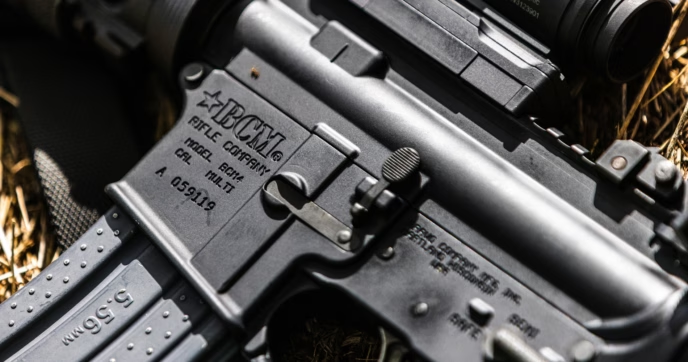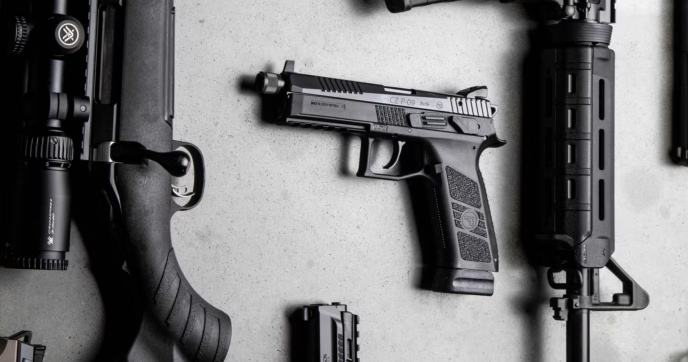The 16” barreled AR-15 is something of a gold standard of versatility when it comes to firearms. It’s an exceptional do-all rifle, capable of effective performance from 5 yards to over a thousand (depending on the cartridge) and is widely used for hunting, competition, personal defense, and nearly every other application a firearm can be used for.
AR-15 pistols, on the other hand, are more of a niche tool. They’re compact powerhouses that excel in their field, but suffer from certain limitations. Some of these limitations are inherent to their design and features, while others are imposed by the legal landscape it occupies.
Both rifles and pistol have their benefits, and the best option for you will, as always, depend on how you want to use it. Below, we’ll break down the differences between AR-15 rifles and pistols and review how those distinctions affect their performance for common use cases.
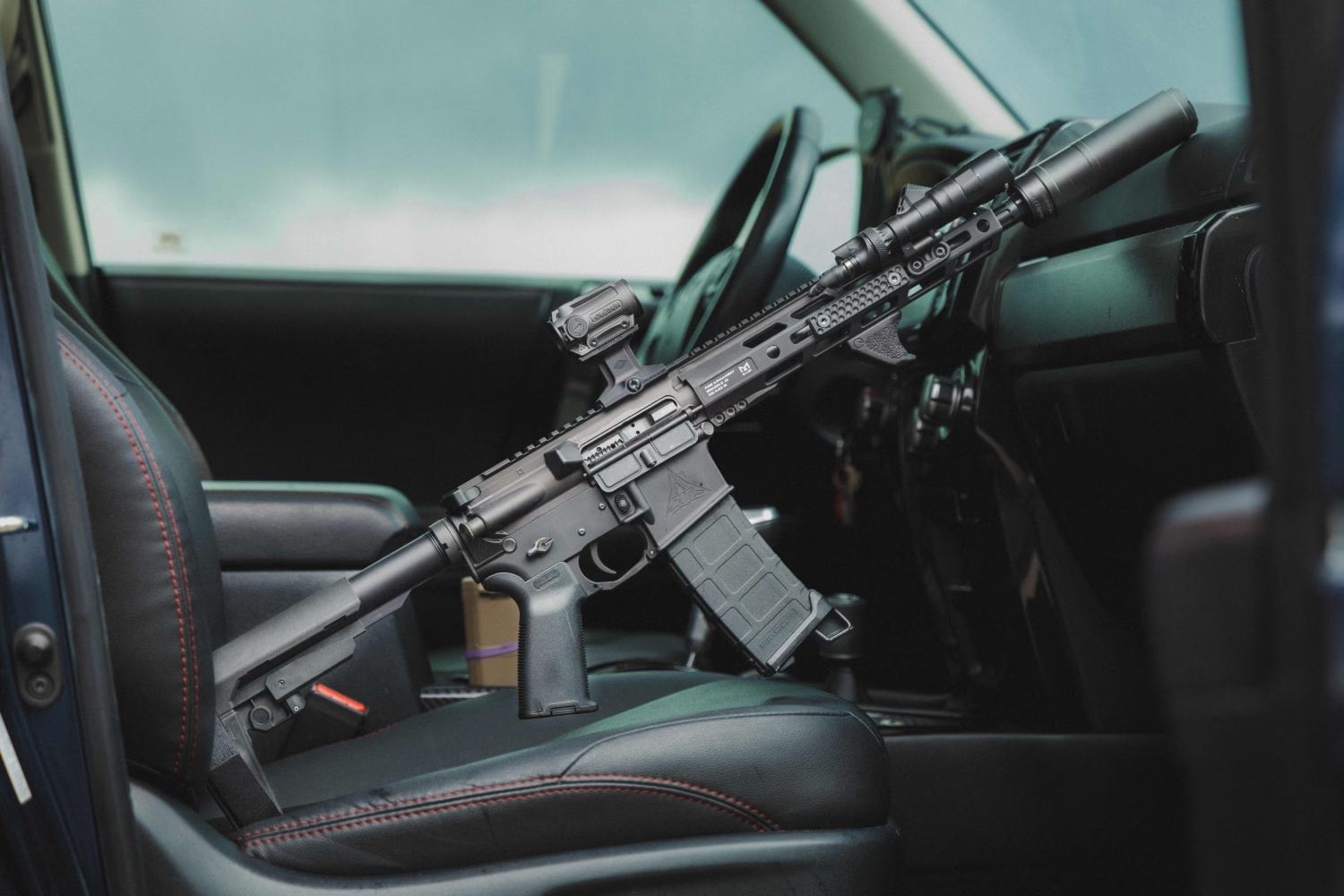
What is an AR-15 Pistol?
An AR-15 pistol is a firearm that uses the same core components as a rifle—the same AR-15 lower and upper receiver set, bolt carrier group, trigger, safety, etc.—but features a barrel shorter than 16″ and lacks a stock.
The lack of a stock is a particularly crucial feature, as a stock would turn an AR pistol into a Short-Barreled Rifle, or SBR. AR-15 pistols also cannot utilize vertical pistol grips, as that would make them an Any Other Weapon (AOW), which is a separate category of firearm.
In most other respects, an AR-15 pistol is essentially a smaller version of an AR-15 rifle, albeit with somewhat reduced ballistics due to the barrel length.
AR-15 pistols are often confused with pistol-caliber carbines. The fact that the two can at times overlap further muddles the waters, but they are distinct classifications. A pistol-caliber carbine (PCC) is a firearm that meets the requirements for a rifle—namely, a stock—but is chambered in a caliber usually reserved for pistols, such as 9x19mm or .45 ACP. While the distinction between carbine vs rifle does generally matter, in the case of PCCs, the terms are essentially interchangeable.
Despite the “carbine” in pistol caliber carbine, the term is still sometimes used to refer to firearms that are legally pistols but are based on or function similarly to rifles. This includes AR pistols chambered in 9mm, which could be considered both a PCC and an AR pistol.
As such, not all AR-15 pistols are PCCs. Most are going to be chambered in a rifle caliber, despite their compact form factor, which would obviously preclude them from being called pistol caliber.
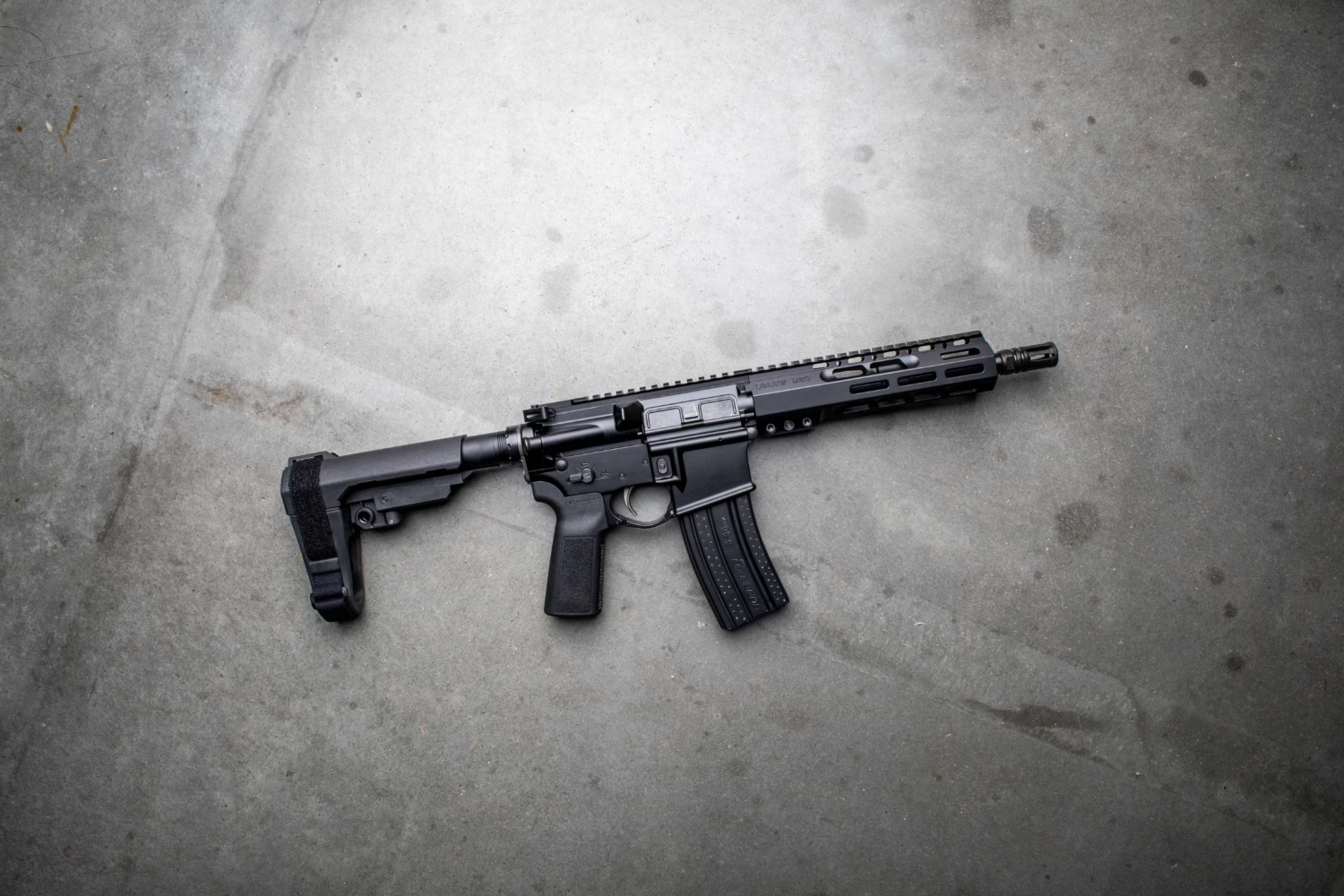
AR-15 Pistol: Pros and Cons
The core benefit of an AR-15 pistol is its size. Because they are not fettered by the 16″ barrel length requirement for an AR-15 rifle, AR pistols can be significantly smaller and lighter, which makes them much handier for use in confined spaces. Inside the tight quarters of a home or a particularly compact competition stage, the short barrel of an AR-15 pistol makes maneuvering around corners and obstacles much easier.
The obvious drawback of a shorter barrel, though, is going to be velocity. Barrel length is generally directly correlated with velocity, and so a shorter barrel is going to mean a slower bullet. This translates into a steeper drop profile, greater wind drift, and reduced energy both at the muzzle and point of impact.
The practical effect of this reduced velocity will be determined by the specifics of your barrel and use case. A pistol could technically have a 14.5″ barrel, which would be negligibly different from a 16″ rifle barrel from a ballistics perspective. A 10.3″ barrel, on the other hand, is going to be significantly different. A more comprehensive look at the relationship between barrel length and velocity can be found in our article on the best barrel length for 5.56.
However, not all use cases will be impeded by the reduced velocity. If your firearm is dedicated to home defense or short-range use, the drop profile and wind resistance are irrelevant. It doesn’t matter how hard it is to hit a target at 400 meters if you never shoot at anything beyond 50. Similarly, while a shorter barrel will produce less muzzle and terminal impact energy, at short ranges, any reasonable AR-15 barrel length is going to produce enough energy to be effective.
Barrel length also plays a large role in determining the length of your gas system, which can have notable effects on recoil impulse, reliability, and parts longevity. Many barrels can use multiple AR-15 gas system lengths, but shorter barrels, such as those found on pistols, tend to be limited to carbine- or pistol-length systems, which will have more felt recoil and faster wear on parts than midlength or rifle-length systems.
One other notable drawback to AR-15 pistols is their legal complexity. While an AR-15 rifle offers nearly complete freedom in how it can be configured and what accessories can be attached, AR-15 pistols are more restricted. As previously mentioned, adding a vertical foregrip or stock to an AR-15 pistol would place it in a different regulatory category, which requires paperwork and prior approval to do so legally.
Additionally, since an AR-15 pistol is a pistol, it cannot be purchased by anyone under the age of 21. In most states, rifles can be purchased by anyone 18 or older, so individuals between those two ages will find themselves limited to rifles.
Short-Barreled Rifles (SBRs)
As we’ve touched on previously, there is a third category of AR-15: Short-Barreled Rifles, or SBRs. These firearms require additional paperwork and ATF approval to purchase or manufacture, but combine the best of both AR-15 rifles and pistols.
As their name would suggest, an SBR is a rifle that has a barrel shorter than 16″ but still features a stock. Since it is legally a rifle, accessories like vertical foregrips can be freely attached. Additionally, longer barrels can be freely used in registered SBRs, so many users choose to keep an extra rifle-length AR-15 upper on hand in order to be able to swap between barrel lengths depending on the task at hand.
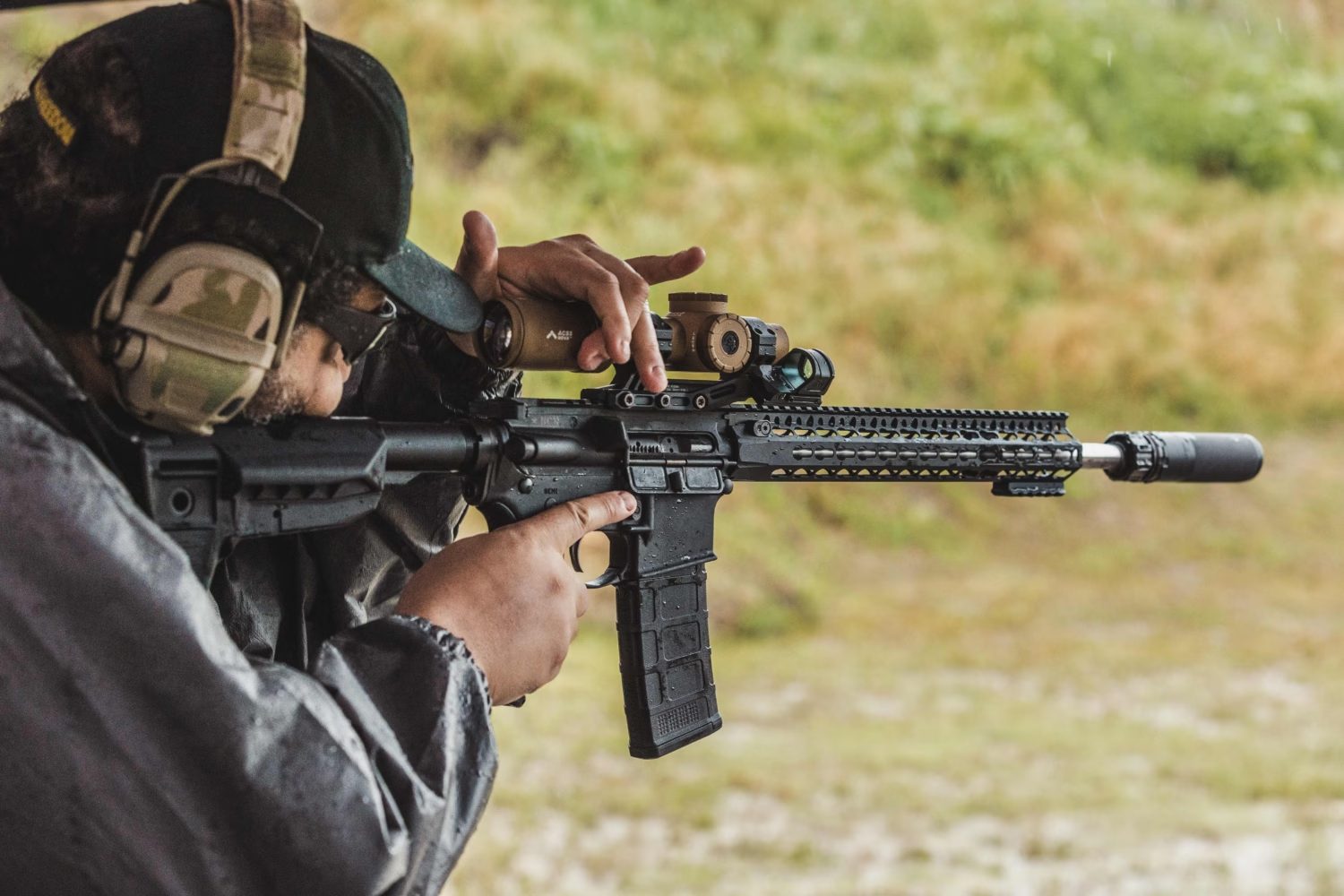
Which Should You Choose?
The choice between an AR-15 rifle or pistol is going to be heavily influenced by how you plan to use it. Certain use cases call more concretely for one format or the other, while many can be well-served by either configuration.
Home Defense
One of the most common applications for AR-15 pistols is home defense. In the confines of an indoor space, the reduced barrel length of an AR-15 pistol really shows its value. This is particularly true if you plan to use a suppressor to protect your hearing, as the added length of a suppressor can easily make an AR-15 rifle quite unwieldy indoors.
However, this does not mean that an AR-15 rifle is an unsuitable choice. A shorter AR-15, such as a 13.7″ or 14.5″ barrel with a pinned and welded muzzle device, is still going to be manageable in all but the tightest environs—especially if you do not own or plan to use a suppressor.
At home defense ranges, the ballistic difference between the two is essentially irrelevant; any barrel length from 10.3″ and up is going to be more than sufficient for the purpose.
Competition
For this category, the best AR will depend heavily on how exactly you plan to compete. For serious competitors, a rifle is the only choice, although an SBR may be a viable option if a short barrel is truly necessary. This is because most regulatory bodies ban the use of rifle-caliber pistols in place of a rifle at official matches, making an AR pistol wholly unsuitable.
However, most competitors will never move beyond the local level, and local matches are often considerably more flexible with their rules. “Outlaw” matches—those that utilize a modified, unofficial rule set—are quite common at ranges across the country, and many of them permit the use of AR-15 pistols.
If the match or matches you attend permit AR-15 pistols, then it may be worth considering if the shorter barrel would be advantageous compared to a rifle. Outdoor matches commonly extended to 100 yards, with some matches even pushing to 200 or 300 yards on their longest stages. At those ranges, some AR-15 pistols may struggle, although pistols with slightly longer barrels, such as 12.5″, may still be capable. Many indoor ranges are forced to limit their maximum distance to 25 or 50 yards, though, and at that range, even a 10.3″ barrel is entirely sufficient.
In the majority of cases, an AR-15 rifle is going to be the most practical firearm for competition, but if your match allows AR pistols and the dimensions of the range make them practical, an AR pistol may well be a viable alternative.
Long Range
For long-range use, AR-15 pistols are impractical. Every tool has a purpose, and this is simply not the one for pistols. Even intermediate ranges, which are typically considered to be anything over 200-300 yards, are going to be best served by an AR-15 rifle.
Beyond 300 yards, the limited velocity of an AR-15 pistol makes hitting the target considerably more difficult than it would be with a longer barrel, even if wind drift is not a factor. At truly long ranges, even a 16″-barreled AR-15 is going to struggle.
Range Use & Training
If your primary purpose for your firearm is just to have some fun at the range and develop your skills, either an AR-15 pistol or rifle is fine. The fundamentals of marksmanship and manual of arms with either format are going to be identical, so you can effectively practice with one and have the skills translate over to the other.
However, if you aspire to compete at a high level, it would be wise to stick to a similar firearm for both competition and training. The differences in weight and ergonomics between an AR pistol and rifle will affect things like swing time and transition speed, as well as recoil impulse. Training heavily with an AR-15 pistol and competing with a rifle is likely to lead to poorer performance, as the handling of the heavier rifle will not match the more agile pistol.
Similarly, if you utilize one or the other for home defense, it’s wise to stick to the same format for training.
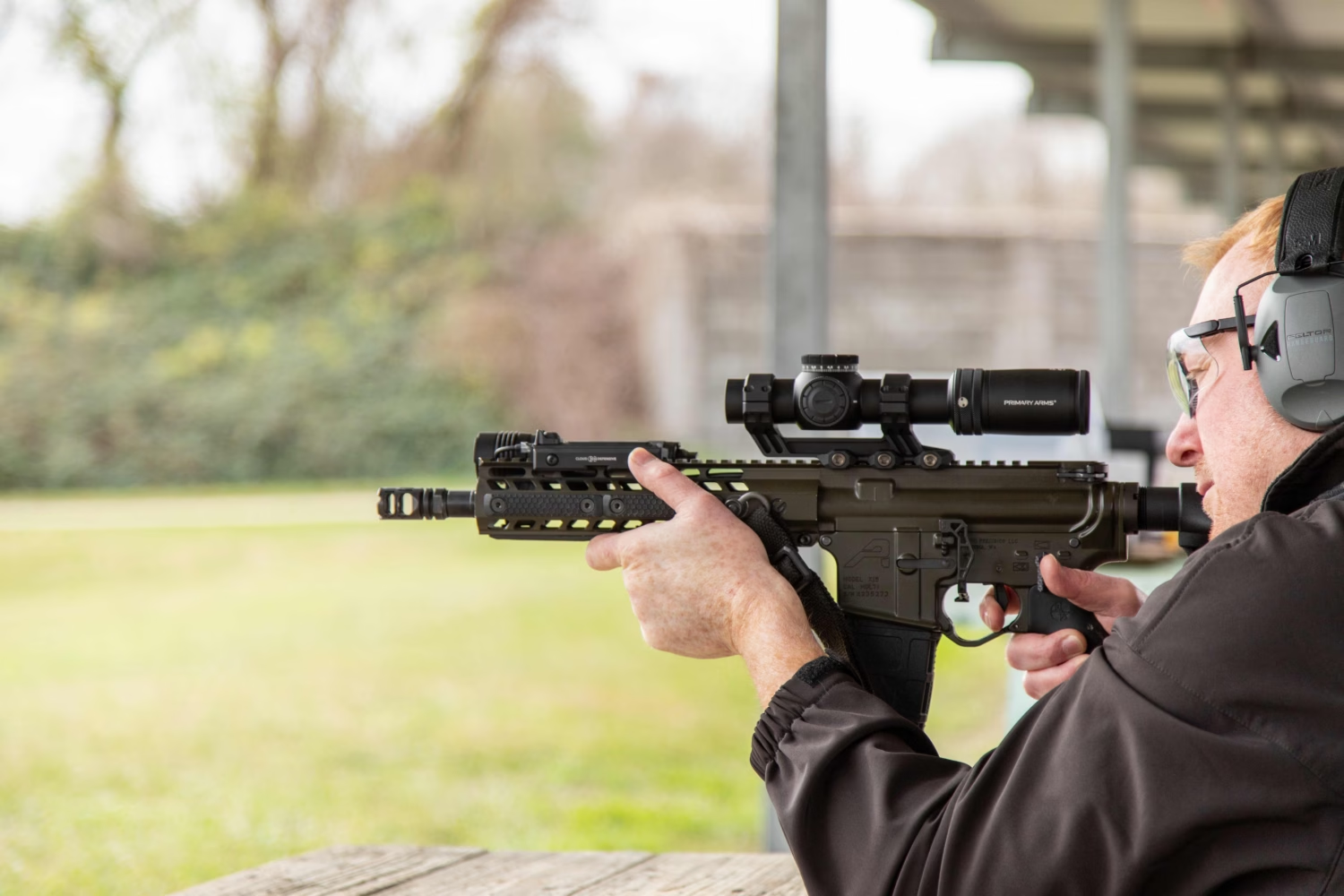
Conclusion
Both AR-15 pistols and rifles have their place, and each offers its own unique advantages. AR-15 pistols are lightweight, quick to maneuver, and excel in tight spaces like hallways. Rifles, on the other hand, offer superior ballistics and are less restricted in their allowable accessories.
The right choice comes down to use case, with AR pistols being the go-to for situations that prioritize maneuverability over ballistics and AR rifles being the inverse.
